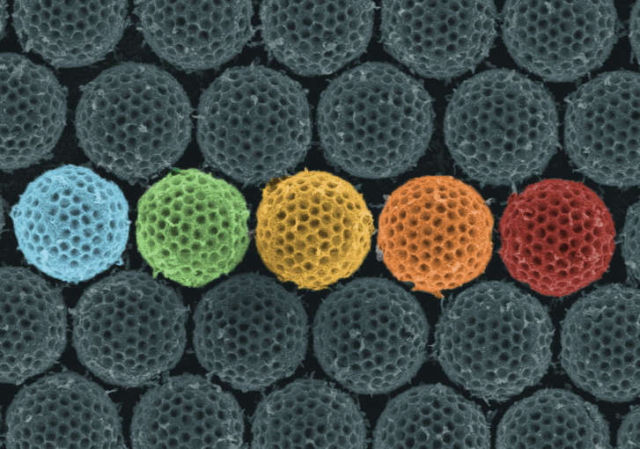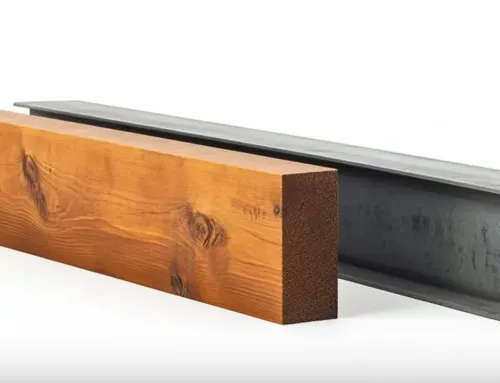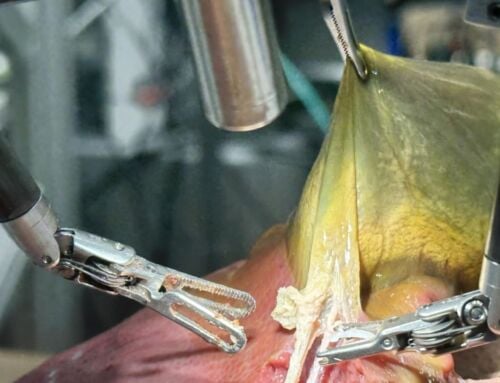Researchers create an ‘invisibility cloak,’ using synthetic material inspired by insects.
Scientists in Penn State engineers created synthetic microspheres with nanoscale holes that can absorb light from all directions across a wide range of frequencies, making them a candidate for antireflective coatings.
Above, synthetic brochosomes (false colored). Credit Shikuan Yang / Birgitt Boschitsch / Penn State
The synthetic spheres also explain how the leaf hopper insect uses similar particles to hide from predators in its environment.
Scientists have long been aware that leaf hoppers extrude microparticles, called brochosomes, and wipe them on their wings. Because the particles are superhydrophobic, the leaf hopper’s wings stay dry in wet conditions. What was not understood before the current work is that the brochosomes also allow leaf hoppers and their eggs to blend in with their backgrounds at the wavelengths of light visible to their main predators, such as the ladybird beetle.
Tak-Sing Wong, assistant professor of mechanical engineering and the Wormely Family Early Career Professor in Engineering, said:
“We knew our synthetic particles might be interesting optically because of their structure. We didn’t know, until my former postdoc and lead author of the study Shikuan Yang brought it up in a group meeting, that the leaf hopper made these non-sticky coatings with a natural structure very similar to our synthetic ones. That led us to wonder how the leaf hopper used these particles in nature.”
source PSU






Leave A Comment